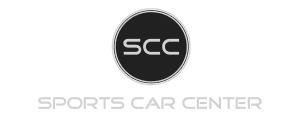Customer story.

Customer Story: Tesla Delivered with Crooked Steering Wheel
A Tesla Model S was delivered to a customer without any noticeable defects during the handover. However, on the way home, the customer realized that the steering wheel was tilted to the right when driving straight. The customer contacted Sports Car Center to inquire if anything could be done about it. We offered an appointment for a four-wheel alignment the next day. The customer brought the car for alignment, and it was adjusted according to the manufacturer's recommendations. Sports Car Center provides four-wheel alignments for all electric vehicles and other special cars.
Even if the car's wheel angles are optimal, potholes, curbs, and other road irregularities can put stress on the car's suspension. These factors can alter the specified alignment settings. Although there might not be visible damage or noticeable steering issues, driving on different roads can alter alignment angles. It is recommended to check the wheel alignment regularly. Incorrect alignment can lead to increased long-term costs, such as higher energy consumption and faster wear of tires and suspension components. Wheel alignment ensures that the wheels are positioned according to the manufacturer's specifications, and it is often part of scheduled maintenance for electric cars.
Regular four-wheel alignment ensures the best driving feel, energy efficiency, and longevity for tires and the suspension. Proper alignment also significantly impacts traffic safety for your vehicle and others around you. During a four-wheel alignment, the angles and inclinations of all four wheels are checked. If adjustments are needed, they are performed to match the manufacturer's recommendations. At SCC - Sports Car Center, we use the Hunter Hawkeye Elite 3D alignment system for nearly all vehicles. The alignment process takes about 45–90 minutes, depending on the condition of the angles and complexity of the work. It should be performed regularly or whenever suspension modifications or repairs are made.
Common symptoms of poor alignment include:
- The steering wheel points crookedly when driving straight. This usually occurs due to incorrect wheel angles.

- The steering wheel vibrates. This can happen when wheel angles are outside manufacturer specifications, causing opposing forces on the wheel.
- The car pulls or follows road grooves. If the suspension and alignment are in good condition, the car should travel smoothly.
- Unstable handling while driving.
- Increased consumption. Incorrect alignment increases tire rolling resistance.
- Changes made to the car’s suspension. After replacing parts like springs, shock absorbers, or control arms, alignment should be checked and adjusted.
- Tires wear quickly and unevenly. Regularly check tire condition and wear.

Checking alignment is sometimes mistakenly referred to as checking toe angles. In reality, alignment also involves checking and adjusting:
- Camber: The tilt of the wheel in relation to vertical. Positive camber means the top tilts outward, negative camber means it tilts inward.
- Caster: The steering axis tilt that brings the steering back to straight after a turn.
- Toe Angle: The angle between the front of the wheels on the same axle. Inward toe is negative; outward toe is positive.
- Thrust Angle: The deviation between the car’s central line and actual path, adjusted by the front wheels based on the rear wheel direction.
Book your wheel alignment appointment here.





